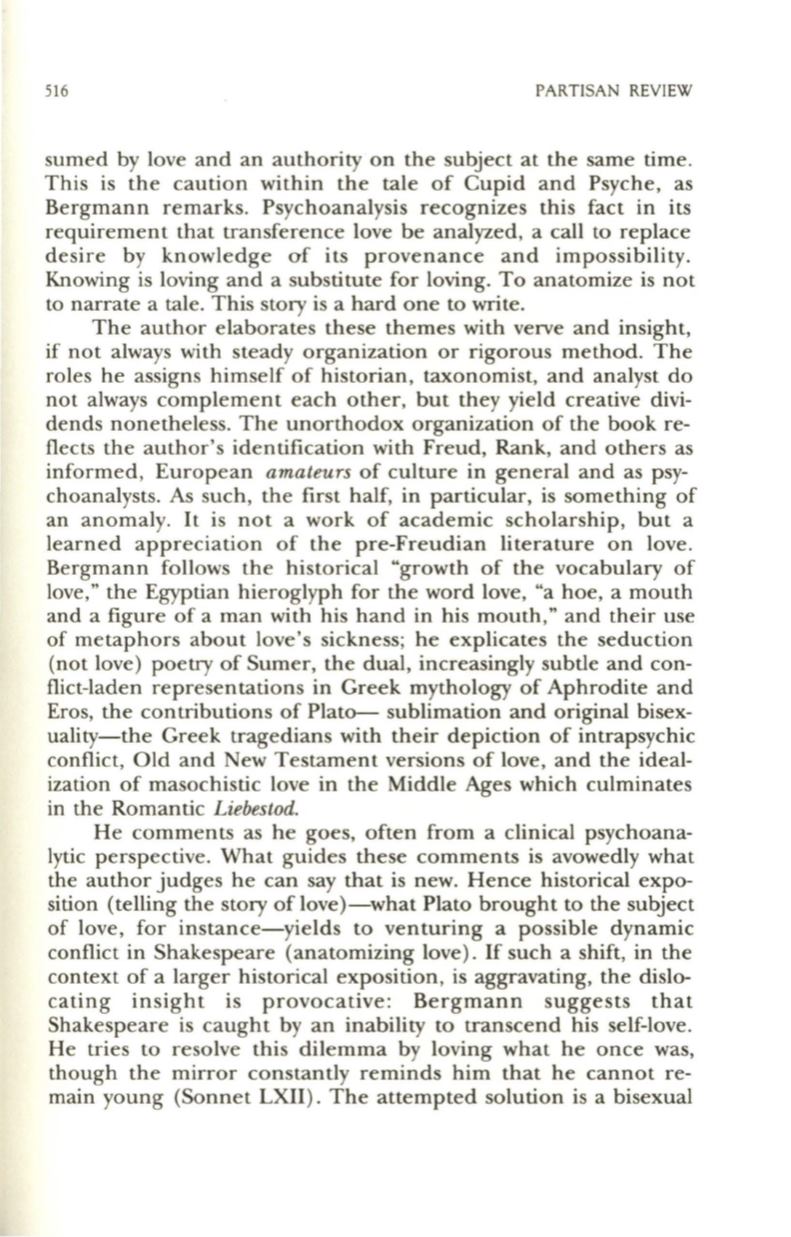
516
PARTISAN REVIEW
sumed by love and an authority on the subject at the same time.
This is the caution within the tale of Cupid and Psyche, as
Bergmann remarks. Psychoanalysis recognizes this fact in its
requirement that transference love be analyzed, a call to replace
desire by knowledge of its provenance and impossibility.
Knowing is loving and a substitute for loving. To anatomize is not
to narrate a tale. This story is a hard one to write.
The author elaborates these themes with verve and insight,
if not always with steady organization or rigorous method. The
roles he assigns himself of historian, taxonomist, and analyst do
not always complement each other, but they yield creative divi–
dends nonetheless. The unorthodox organization of the book re–
flects the author's identification with Freud, Rank, and others as
informed, European
amateurs
of culture in general and as psy–
choanalysts. As such, the first half, in particular, is something of
an anomaly.
It
is not a work of academic scholarship, but a
learned appreciation of the pre-Freudian literature on love.
Bergmann follows the historical "growth of the vocabulary of
love," the Egyptian hieroglyph for the word love, "a hoe, a mouth
and a figure of a man with his hand in his mouth," and their use
of metaphors about love's sickness; he explicates the seduction
(not love) poetry of Sumer, the dual, increasingly subtle and con–
flict-laden representations in Greek mythology of Aphrodite and
Eros, the contributions of Plato- sublimation and original bisex–
uality-the Greek tragedians with their depiction of intrapsychic
conflict, Old and New Testament versions of love, and the ideal–
ization of masochistic love in the Middle Ages which culminates
in the Romantic
Liebestod.
He comments as he goes, often from a clinical psychoana–
lytic perspective. What guides these comments is avowedly what
the author judges he can say that is new. Hence historical expo–
sition (telling the story of love)-what Plato brought to the subject
of love, for instance-yields to venturing a possible dynamic
conflict in Shakespeare (anatomizing love).
If
such a shift, in the
context of a larger historical exposition, is aggravating, the dislo–
cating insight is provocative: Bergmann suggests that
Shakespeare is caught by an inability to transcend his self-love.
He tries to resolve this dilemma by loving what he once was,
though the mirror constantly reminds him that he cannot re–
main young (Sonnet LXII). The attempted solution is a bisexual


